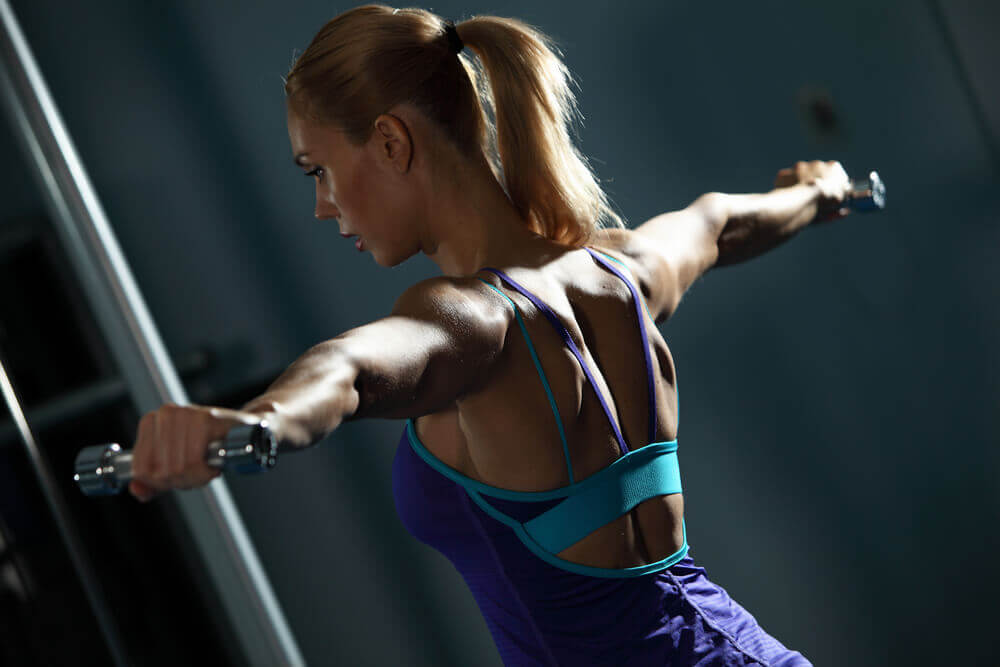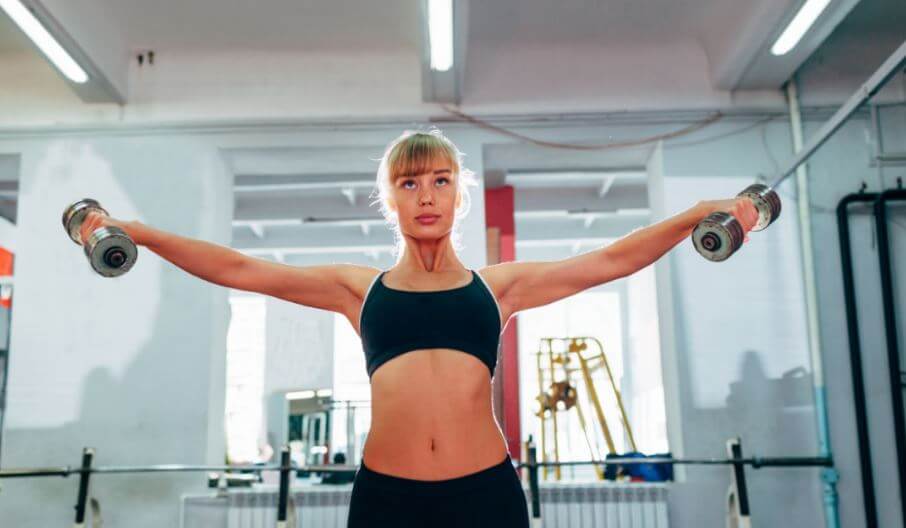Lateral Lifts

Lateral lifts are popular exercises for deltoid and trapezius muscles. If you’re interested in adding lateral lifts to your workout, read our post on everything you should know about them.
Lateral lifts might seem like a basic exercise but many people do them incorrectly. The mistakes mean less efficiency in building muscle mass and higher risks of injury. In light of that, learning how to do them the right way is crucial.
If you want to do lateral lifts, read over our recommendations on this exercise. Try doing 3 or 5 sets of 10 to 15 repetitions and resting 1 minute between each set.
How can you do lateral lifts the right way?
To get started, grab a pair of dumbbells and stand with your legs straightened out and arms to the side. Move your feet a little closer together than a shoulder’s width while keeping your palms towards your body.
Keep your torso still and back straight. Lift the dumbbells up with your elbows slightly bent and palms still facing down.
Never lift your wrists higher than your elbows as you’re raising the dumbbells. Keep raising them until your arms are parallel to the floor.

Exhale as you lift the dumbbells and when your arms are parallel to the floor, take a moment to hold. Then, slowly bring the dumbbells back down to the original position while inhaling.
The elbows should be slightly bent, maintaining the exact same angle from start to finish. Don’t let the dumbbells touch your body before lifting them again for the next rep.
Recommendations for a proper execution
Many people do lateral lifts incorrectly. So we recommend doing them in front of a mirror or someone who can look out for mistakes.
Remember that this is a muscle-isolating exercise, which means you should concentrate on stretching and contraction rather than lifting heavy weights.
Another common mistake among beginners is letting dumbbells flail around and not lifting their elbows until they are parallel with their ribs. These mistakes keep the upper arm muscles from moving as much as they could.

You should also keep your repetitions slow and controlled. Many people actually use the impulse to help them lift heavy weights, but it’s actually not that effective. If you work out correctly, you’ll find that the last repetitions with lighter weights will even be quite challenging.
In any case, if you’re making any of these mistakes, think about reducing the weight of your dumbbells. Over time, as you gain more technique, you can use heavier weights again. Don’t forget that excessively lifting heavy weights is a faulty workout that does nothing for muscle gain.
As you read with us today, lateral lifts are one of the best exercises to add to your routine if you want to train your deltoid and trapezius muscles.
If you’re not already using lateral lifts in your routine, we highly recommend them. Or, if you’re already doing them, improving your technique can maximize your benefits. Why not get started today?
Lateral lifts are popular exercises for deltoid and trapezius muscles. If you’re interested in adding lateral lifts to your workout, read our post on everything you should know about them.
Lateral lifts might seem like a basic exercise but many people do them incorrectly. The mistakes mean less efficiency in building muscle mass and higher risks of injury. In light of that, learning how to do them the right way is crucial.
If you want to do lateral lifts, read over our recommendations on this exercise. Try doing 3 or 5 sets of 10 to 15 repetitions and resting 1 minute between each set.
How can you do lateral lifts the right way?
To get started, grab a pair of dumbbells and stand with your legs straightened out and arms to the side. Move your feet a little closer together than a shoulder’s width while keeping your palms towards your body.
Keep your torso still and back straight. Lift the dumbbells up with your elbows slightly bent and palms still facing down.
Never lift your wrists higher than your elbows as you’re raising the dumbbells. Keep raising them until your arms are parallel to the floor.

Exhale as you lift the dumbbells and when your arms are parallel to the floor, take a moment to hold. Then, slowly bring the dumbbells back down to the original position while inhaling.
The elbows should be slightly bent, maintaining the exact same angle from start to finish. Don’t let the dumbbells touch your body before lifting them again for the next rep.
Recommendations for a proper execution
Many people do lateral lifts incorrectly. So we recommend doing them in front of a mirror or someone who can look out for mistakes.
Remember that this is a muscle-isolating exercise, which means you should concentrate on stretching and contraction rather than lifting heavy weights.
Another common mistake among beginners is letting dumbbells flail around and not lifting their elbows until they are parallel with their ribs. These mistakes keep the upper arm muscles from moving as much as they could.

You should also keep your repetitions slow and controlled. Many people actually use the impulse to help them lift heavy weights, but it’s actually not that effective. If you work out correctly, you’ll find that the last repetitions with lighter weights will even be quite challenging.
In any case, if you’re making any of these mistakes, think about reducing the weight of your dumbbells. Over time, as you gain more technique, you can use heavier weights again. Don’t forget that excessively lifting heavy weights is a faulty workout that does nothing for muscle gain.
As you read with us today, lateral lifts are one of the best exercises to add to your routine if you want to train your deltoid and trapezius muscles.
If you’re not already using lateral lifts in your routine, we highly recommend them. Or, if you’re already doing them, improving your technique can maximize your benefits. Why not get started today?
This text is provided for informational purposes only and does not replace consultation with a professional. If in doubt, consult your specialist.








